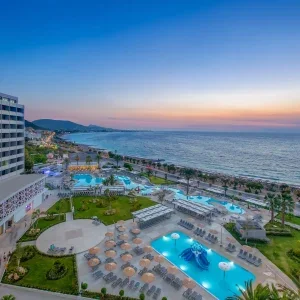If the walls of Bodmin Jail could talk, they would be screaming. First built in 1779, this austere prison complex situated on the edge of Bodmin Moor in Cornwall has housed more than 35,000 prisoners in its time, including 341 children. It has been the site of over 55 public hangings, and the crimes committed by some of its more notorious former inmates run the gamut from petty theft and fraud to arson, rape and murder.
Designed by East India Company servant and military engineer Sir John Call, Bodmin is not just another heritage-listed building but a landmark structure within the British judicial system. It was the first gaol to hold prisoners in individual cells with segregated male and female areas, hot water, and light and airy areas for prisoners to live and work. Since its closure in 1929, however, the old prison complex has struggled to find its way.
Like an ex-convict searching for redemption, it was subjected to many rehabilitation schemes, which were all largely unsuccessful. A year after it relinquished its penal role, Bodmin became a casino and a nightclub with mock executions before structural problems killed the party. A precarious section of the roof was removed for repairs and over time the jail’s walls started to crumble, leaving it partially derelict. Attempts to blow up the prison in the 1930s for salvage were unsuccessful because its walls were too thick. In 2004 the local Wheten family purchased the old building, restoring its historic walls and transforming it into a part monument, part tourist attraction designed to appeal to history buffs and prison aficionados.
A new start
Then, in 2015, the decision was made to breathe new life into Bodmin. Far from a crumbling ruin, property firm Mallino Developments saw it as a perfect site on which to build a 70-room luxury hotel. Step in Matt Cartwright, founder of London-based Twelve Architects, who has been working to that goal ever since. “[When I first saw Bodmin] it was primarily in a ruinous state, except for an element of it, which was a visitor attraction, but it was the client’s vision I was drawn to,” Cartwright explains. “The desire to create a unique offering in terms of hospitality. There’s nothing else quite like it, certainly not in the UK.”
A major draw for Cartwright was the freedom that came with developing an unbranded boutique hotel rather than adhering to more rigid brand standards. The architect, who founded Twelve Architects in 2012, is currently overseeing Radisson’s ambitious flagship hotel in the Russian Urals due to open later this year.
Of course, as Cartwright himself concedes, Bodmin is not the first former gaol to become a hospitality space. There’s the Malmaison in Oxford, the old Victorian jailhouse that had its bare cells transformed into hotel suites in the mid-2000s; then there’s the Courthouse Hotel in Shoreditch, where the Kray twins were detained before the first of many court appearances in 1965. European equivalents include the luxurious Four Seasons Hotel in Istanbul – formerly Sultanahmet Jail – a converted 100-year-old prison used to incarcerate writers and artists that fulminated against the Ottoman empire. Finland also has Hotel Katajanokka, a former jail in Helsinki that once housed the country’s former President Risto Ryti during the Second World War.
Built near government embassies or offices or located on the periphery, ex-jails turned hospitality attractions predominantly lie in urban dwellings. And for good reason. What makes Bodmin unique though is it’s rural, isolated location.
Set beside a large expanse of undulating granite moorland in north-east Cornwall, its pastures steeped in Arthurian legend are part of its allure. In fact, when prospective investors arrived at Bodmin’s crumbling ruins the vines were almost taking over.
Comfort with character
For Cartwright, the aim of the redevelopment plan was to somehow maintain the spirit of a unique building with a special history while at the same time ensuring it became a comfortable, liveable hotel space.
“We felt that part of its charm was to leave it in this kind of semi-ruinous state, and then put modern interventions back into it,” Cartwright explains. “All of the new work that we’ve put back in is clearly modern. We’ve not tried to replicate the original design aesthetic. I think it’s striking that balance between clearly turning it into a premium hotel product which is unique, without losing the essence of Bodmin Jail.”
Part of achieving this balance comes from the exposed brickwork that gives the hotel an austere prison-like feel. Replicas of the original walkways that would have led the accused to their grim fate remain and the rooms still feature the barred steel windows that stopped prisoners from escaping their cells and scaling the walls. Inside the cells, exposed stonework with luxurious carpets, timber floors, wardrobes and a variety of soft furnishings make things more luxurious. Some of the original prison doors have been reinstalled, while efforts were made to reclaim others from old jails across the country. Over Zoom, Cartwright points out one particular door taken from the old Wandsworth jail.
What were the initial challenges, then? Most, according to Cartwright, were structural. The building was riddled with damp after being roofless for 70 years. The walls, in part, were over a metre thick so cutting through them without potentially causing lasting damage was tricky. Numerous tests and surveys were conducted to measure the walls and ceilings of each individual cell, but they couldn’t always account for the deviations in historical design. The prison has already been subjected to numerous makeovers by ruling monarchs, each of whom looked to tweak certain elements in terms of structure and layout.
“Each room has a bespoke quality. You come up with a design and produce a set of technical information, and then once you start reinserting the walkways and get access back to the upper floors, you find that what you thought was going to be the case is not quite the case,” Cartwright explains. “You’re not talking massive differences, but it means that you’ve then got to adapt [to that] information as you’re building.”
Shedding light on history
A crowning feature of the project is a translucent skylight that sits four storeys up and is supported by load-bearing walls connected to the old jail cells on either side. To ensure the structural integrity of the building, thick black columns were placed either side of the main atrium with triangular steel sections dropped by crane onto the roof and fixed into shape to support the skylight.
“We wanted to try to preserve and enhance what’s already here and that’s why we kept the skylight,” Cartwright says. “We didn’t put a solid roof back on so that you still got a naturally lit, almost continental feel to the atrium. The walkways that you can see are the original prison walkways, which would have been used to access the jail cells.”
Additional problems crept in. Loose rubble derived from a local housing estate built within the compound in the mid-1990s had piled up and needed to be excavated without damaging the building’s exterior.
The local wildlife continued to roam around the compound, with rare species of local bats and birds circling the prison. Up to nine species of bat, including greater and lesser horseshoes and the miniature pipistrelles were using the ruins as mating and roosting sites. These invasions halted the building work as specialist handlers had to be brought in to ferry the animals off the premises to protect their ecosystem. In a fitting turn of events, the bats even got their own bungalow beside the compound. Despite these challenges, Cartwright is satisfied with the final project, which is scheduled to open its freshly coated doors this summer – complete with 70 bedrooms, a restaurant, bistro, alfresco dining space and a cocktail and gin bar. It is, he says, a remarkable structure with slices of its macabre history left uniquely exposed.
“There’s this kind of austerity to the building, particularly when you’re on the outside of it, because the windows are very small and the walls are very tall,” Cartwright says. “You have an external wall around it, the jail wall, so it’s very imposing. But when you get inside, you have this cathedral-like series of spaces, which is really calming. In the evening it’s really tranquil, but then you reflect back to its former use as a prison. It has that strange mix of emotions.”
Guests travelling to Bodmin this summer will be eager to relax and enjoy their newly acquired postlockdown freedom. After feeling imprisoned for so long an old 18th century prison is a fitting place to toast newly acquired liberties.






